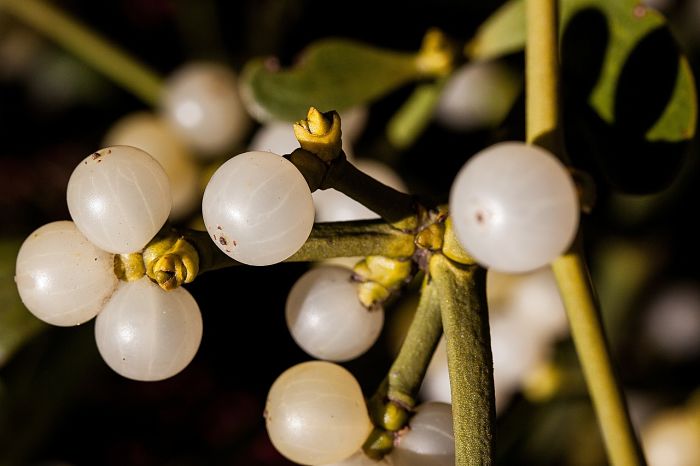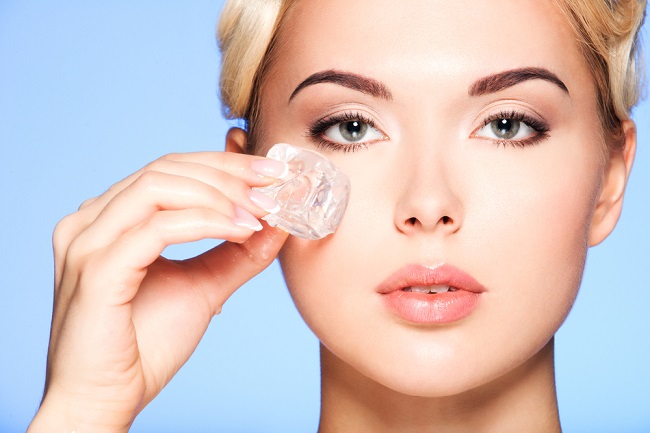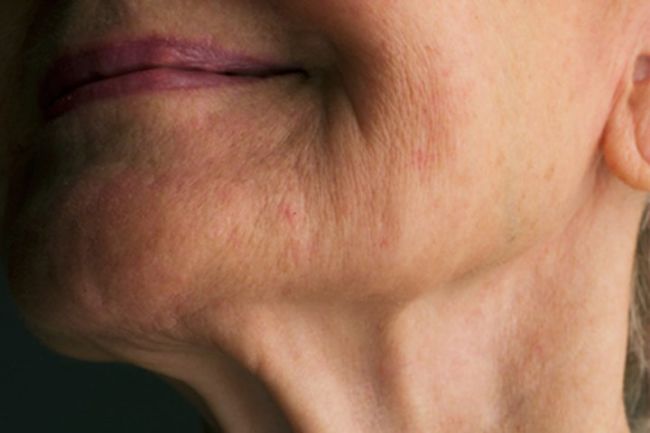Mistletoe is known because it plays a mystical role in many customs and also in magical rituals. Although this parasitic plant (plants that get their nutrients through another plant), which is located high in the branches of the host trees, does not confer superhuman powers, it is definitely a miraculous medicinal plant used as a natural remedy in many parts of the world.

Thanks to modern science, it is now more than clear that the healing power of mistletoe is not the work of a myth and the world of fairy tales, but is actually a natural and healthy remedy that is even good at cancer treatment. On the other hand, not only medicine, but also the cosmetic industry is making use of its versatile properties.
The belief in the magical power of mistletoe dates back to antiquity. The druids, who were like priests, teachers, and healers in one person, worshipped mistletoe, especially the one that grows in oaks known as “omnia sanans,” and considered it a panacea. Also in the Middle Ages, a type of mistletoe known as a witch’s aroom was used for “magical” and medical purposes. Today mistletoe are still hung over the door frame at Christmas time, as this is believed to ensure health, prosperity and fertility in the New Year.
Mistletoe: a plant with medicinal benefits
The fact that mistletoe behaves in a manner totally opposite to most plants, in terms of fruit growth and ripening, has certainly contributed to its reputation as a medicinal plant.
This is because in the winter, when all other plants are in the winter period, mistletoe begins to grow suddenly. It blooms from February to March and bears ripe fruit from November.
As in humans, the fruit takes about nine months to fully mature. This plant does not need the sun; it is independent of light and gravity. This is why the evergreen leaves of the plant grow in all directions and form the typical round mistletoe bush. This phenomenon does not exist in any other plant.
Benefits of Mistletoe as a Natural Remedy
Mistletoe is common throughout Europe and is considered a semi-parasitic, as it does not grow in the soil but in trees, obtains a large part of the nutrients from its host, but also performs the function of photosynthesis so it could easily survive without a host.
Of the approximately 1,400 types of plants known as mistletoes in the broadest sense, only one, the white-leafed mistletoe (Viscum Alba), is used today for the manufacture of medicines and cosmetic products for care.
Mistletoe in the fight against cancer
White mistletoe therapy is the best researched among unconventional procedures in cancer medicine. The unique combination of its ingredients makes mistletoe a very special medicinal plant.
In addition to containing a variety of amino acids, proteins, triglycerides (fats), flavonoids (typical plant dyes), potassium and phosphorus, it also contains highly toxic substances: viscotoxins and lectins.
These toxic substances have an important effect as adjuvant therapy in patients suffering from cancer [cancer.gov]. Lectins in mistletoe are sugary proteins that appear in this form only in mistletoe and inhibit the growth of cancer cells.
They are among the best studied ingredients of mistletoe. Viscotoxins are protein compounds and are similar in structure to cobra venom. Its effect is not as researched as that of lectins; however, viscotoxins are known to dissolve cancer cells by destroying their cell wall.
Mistletoe Supplements for Cancer
Today, mistletoe supplements are primarily used as an extra component to cancer treatment in order to improve the patient’s condition and reduce their side effects. A treatment accompanied at the same time with mistletoe extract reduces the side effects of conventional cancer therapies, such as chemotherapy or radiation therapy.
Mistletoe extracts also stimulate the replication of immune cells and activate natural killer cells. They also increase the formation of beta-endorphins, and endogenous opiates. This is good for relieving pain and also against depression. In folk medicine, mistletoe is considered beneficial in menstrual disorders, epilepsy, atherosclerosis and hypertension.
Its role in natural medicine
Mistletoe was discovered as a medicinal plant in cancer therapy by the founder of anthroposophical spiritual science. According to the anthroposophical view, malignant tumors are malformations that grow at the wrong time in the wrong place in the human body.
Similarly, mistletoe is a plant that grows as a parasite in other plants, that is, in the “wrong place”, which is in trees and not in the soil. Mistletoe does not feed alone, but gets most of its nutrients from the tree on which it grows.
If we look at it this way, a tumor also feeds on the body in which it has formed. Therefore, mistletoe reflects cancer in the plant kingdom. Prepared as a drug, mistletoe provides the body with the capabilities that have been lost, which is first of all, the reason why the growth of the tumor was possible. Today there is a whole range of products for the treatment of cancer based on mistletoe extract.
Cosmetics – The Uses of Mistletoe in Care Products
The amino acids of this medicinal plant are especially important for the cosmetics industry. Especially arginine, which serves as a support for the skin and tissue in case of dryness, itching and eczema.
Mistletoe is also very effective in the treatment and prophylaxis of cellulite. The flavonoids contained in mistletoe are important as antioxidants. They neutralize free radicals, preventing them from attacking skin cells or causing irreversible damage to DNA, strengthening the skin’s immune system and providing optimal protection against cellular aging.
Recent research has shown that mistletoe extract has a very special property: it relieves the appearance of pigmented spots and prevents the formation of new spots.
Unlike other active ingredients, which simply whiten pigment spots or freckles, and which are also often aggressive and therefore make the skin more sensitive, the substances contained in mistletoe inhibit tyrosinase, that is, the formation of melanin, the natural dye that allows the development of dark and undesirable spots.
Lightens the skin
The result of using mistletoe for this purpose is a gentle lightening of the skin. Mistletoe provides an additional protective function due to its antioxidant effect. Since pigmentary disorders are usually due to excessive exposure to the sun or free radical damage.
In addition, the fact that it is also a purely natural remedy makes mistletoe even more convenient. Lotions or creams containing mistletoe extract are a natural, harmless and effective alternative to bleaching through fruit acids, laser treatments and other aggressive treatments.
Mistletoe may be used to treat all of the following discomfort:
- Sleep problems, restlessness, palpitations.
- Hypertension (high blood pressure).
- Arteriosclerosis.
- Vertigo caused by hypertension.
- Back pain.
- Weakness of the knees, weakness or atrophy of the tendons and bones.
- Dry skin.
- Restless fetus and uterine bleeding during pregnancy.
- Epilepsy.
Parts used: twigs and leaves
- Taste: bitter.
- Thermal effect: neutral
- Organ allocation: kidneys, liver, heart.
- Dosage: 3 – 12 g
The references cited below belong to official websites of international cancer research bodies and alternative medicine uses, with their respective scientific studies approved.
Folk medicine and anthroposophy
Folk medicine uses several preparations with this medicinal plant, for example in infusions, drops, jelly tablets, tablets and mistletoe tincture.
In anthroposophical medicine, fresh vegetable juices and fermented aqueous extracts of mistletoe are recommended for the treatment of cancer. This complementary healing goes back to Rudolf Steiner, the founder of the Waldorf schools.









